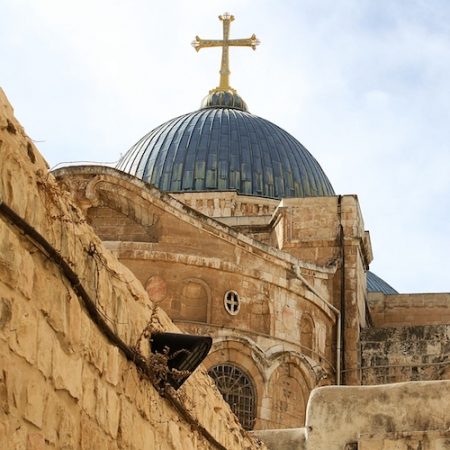Petra of the Nabateans is not mentioned directly by name in the Bible, but it was a neighbouring civilisation that flourished south of Judea. It was contemporary with Jesus and probably had trade links that connected with the land of Israel and the Roman world. In fact the Romans took it over a century after Jesus. The frankincense presented by the Magi to the new-born king Jesus could very well have come from Yemen through Petra to Judea.
As with the Decapolis town of Jerash seen on Day 1, the scale is amazing. This city in the desert covered 264 square kilometres. Rather than take materials to the building site the Nabateans took chisels and digging tools to the soft stand stone rock and dug, but oh did they dig!
Below are pictures of tombs and site overviews from Petra.
What the pictures do not show is how the Nabateans engineered a sophisticated water collection system. It rains occasionally in the desert but when it does everything immediately runs off the exposed rock surfaces. Lives have often been lost due to flash floods even in recent times. The Nabateans collected all the run off and channelled it to vast cisterns to enable agriculture and water for the population. This was astounding engineering.
After a 750 step climb -at the hottest part of the day- which we took by mule and donkey respectively, we came to the so-called ‘Monastery’ which was also built as a tomb but in Byzantine times was used as a church. These facades feature styles copied from wherever Nabateans visited. 2,000 years of erosion takes its toll.
For some reason our Arab guide chose Barbara to demonstrate how red colouring [‘Rouge’] and dark eye shadow were readily available from layers in the rocks. Barbara became the new Queen of the Desert! The effect was actually very good, but did run with sweat.
On a personal note this day was physically challenging due to distances and heat. It took 7 hours to see the small part we did, and the fit-bit read that as over 14 km walked!
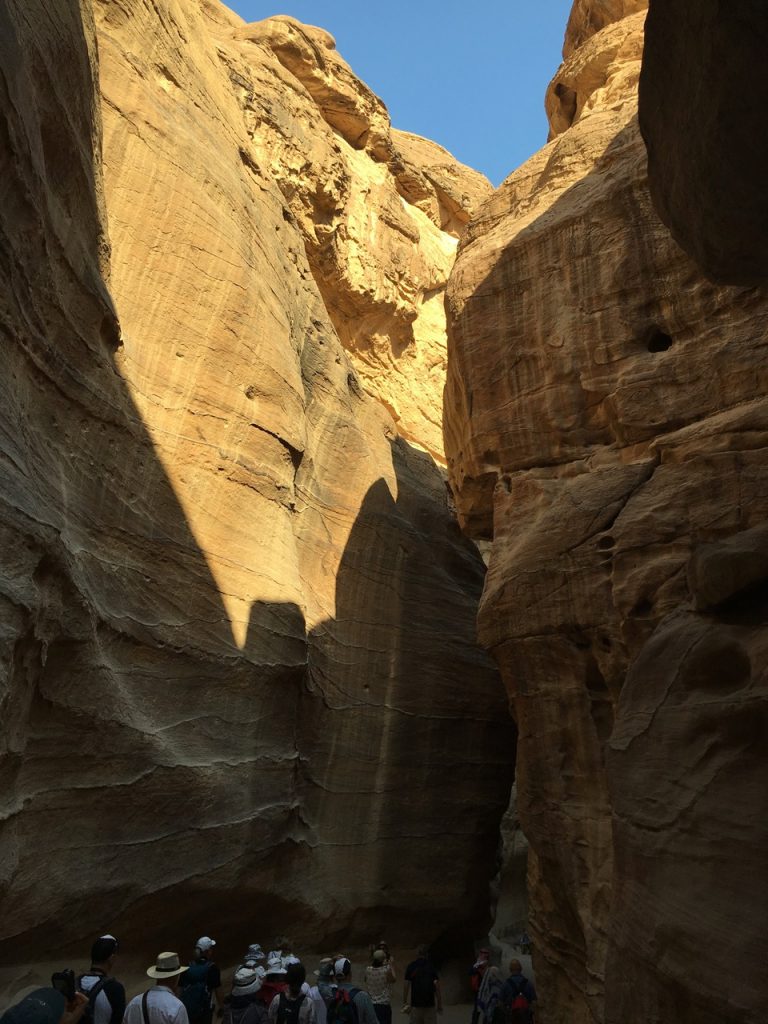
The long road/’Siq’ into Petra follows a natural separation in the rock formations. We started early to enjoy the morning cool. 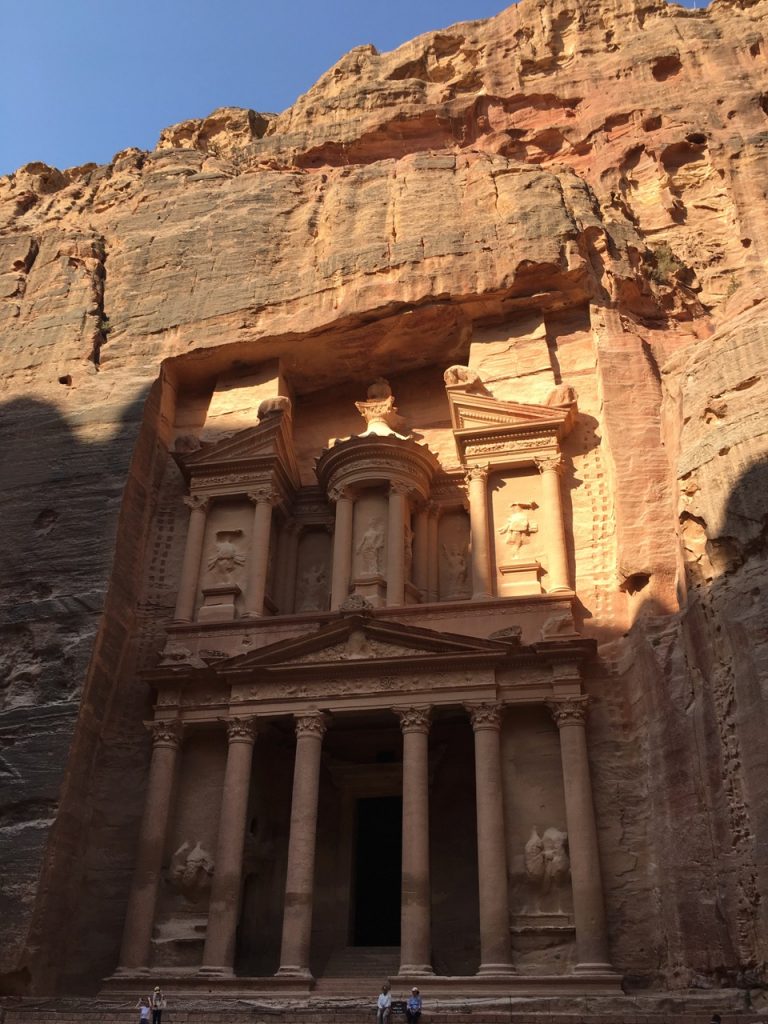
At the end of the long ‘Siq’, or narrow entrance, stands the often photographed ’Treasury’. It was actually a tomb. 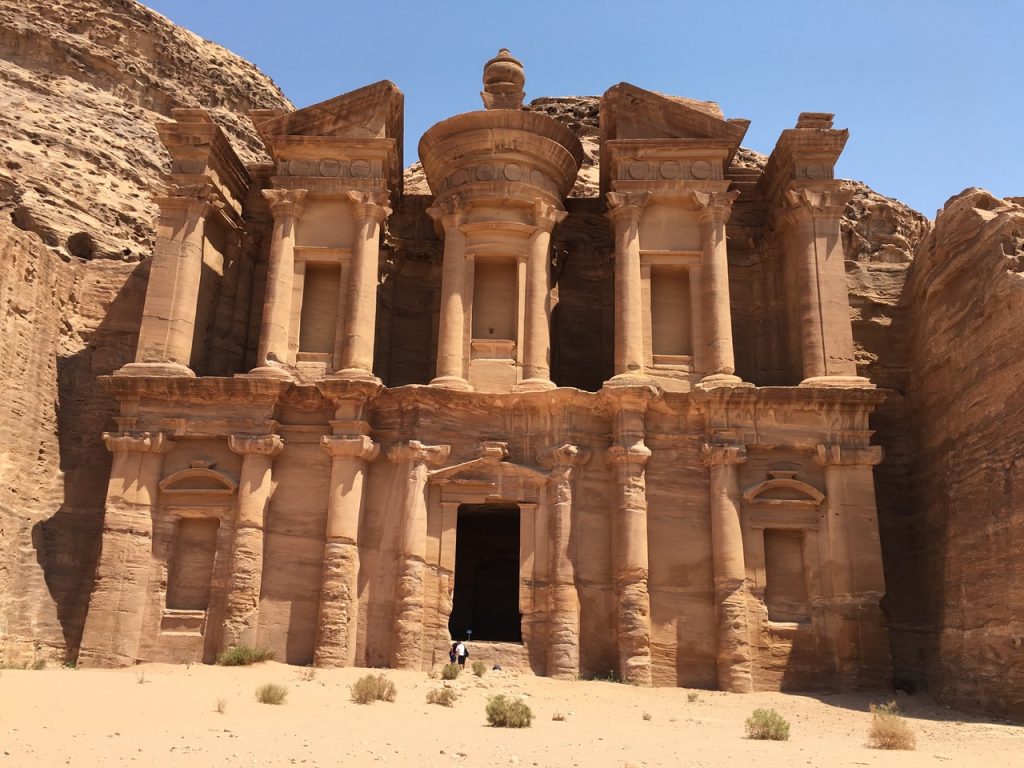
Tomb / so-called ‘Monastery’ 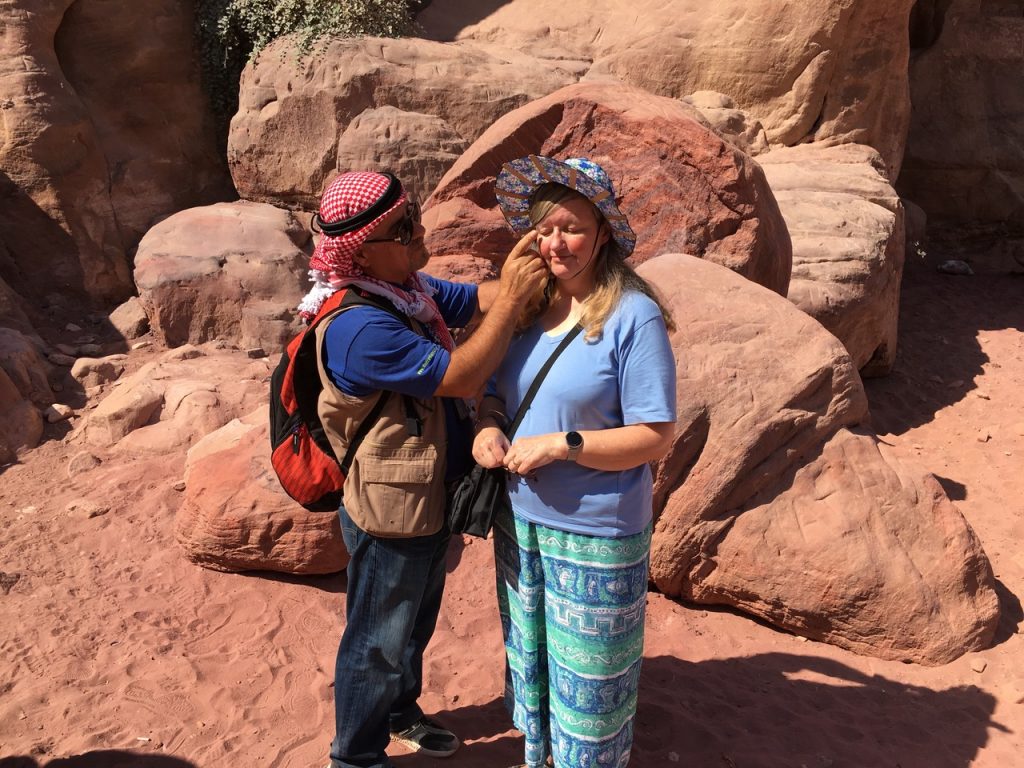
Barbara – Queen of the Desert!
